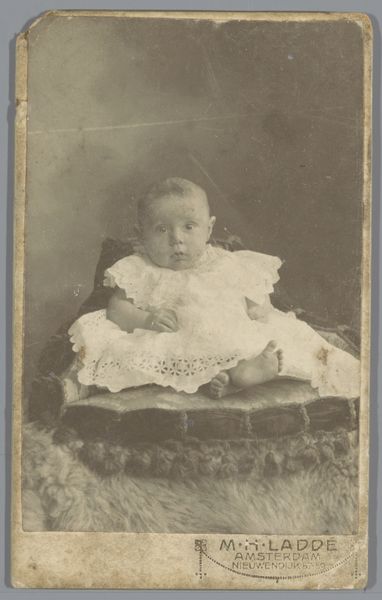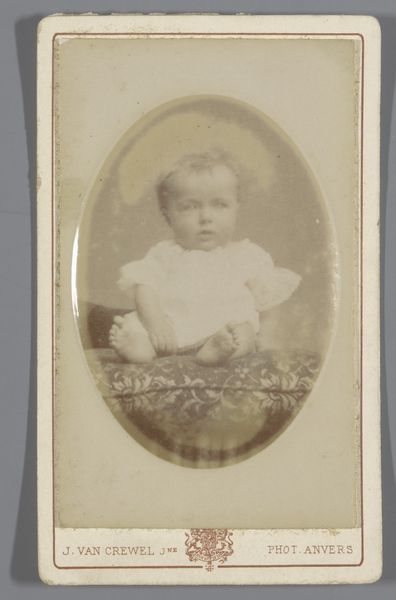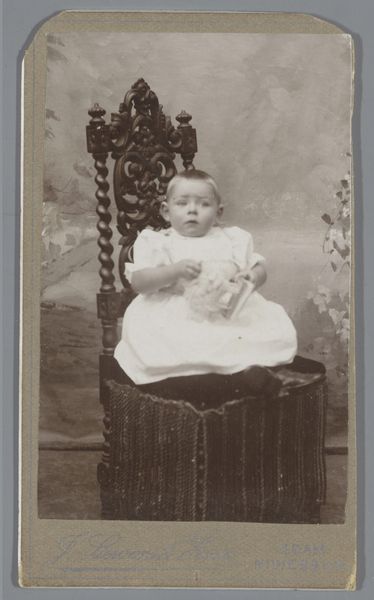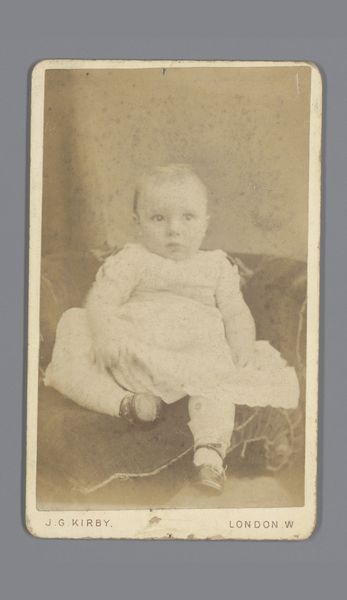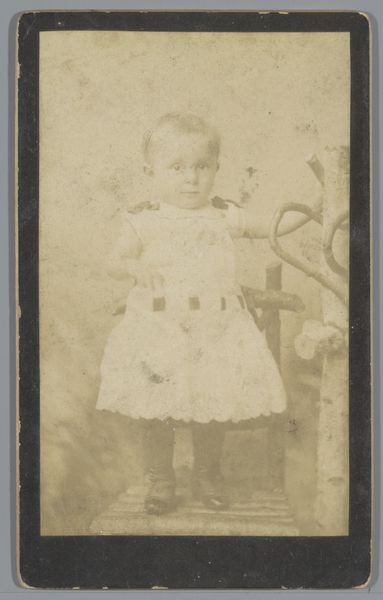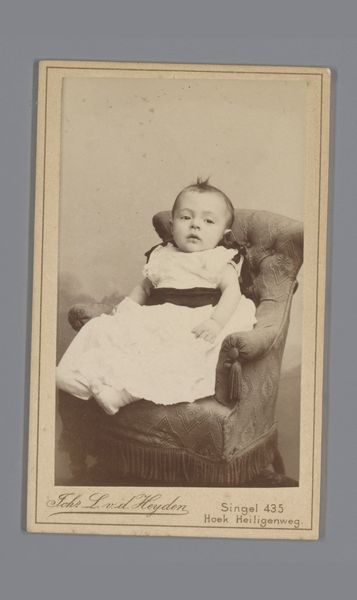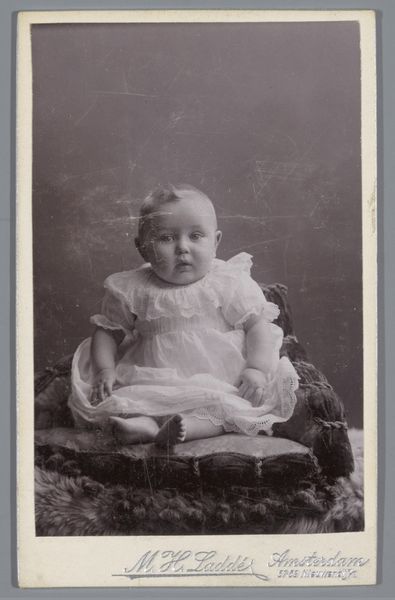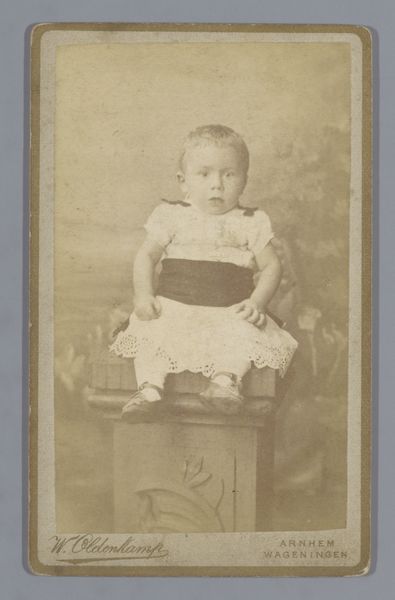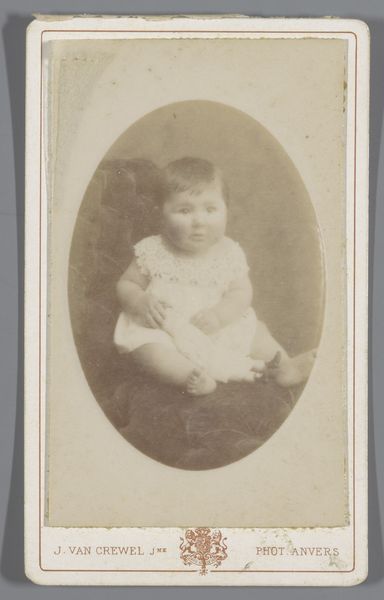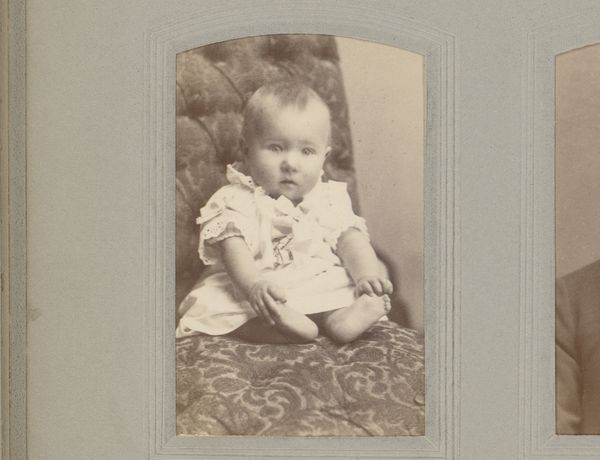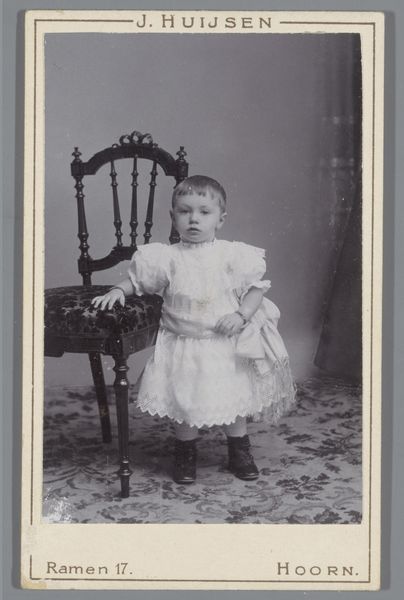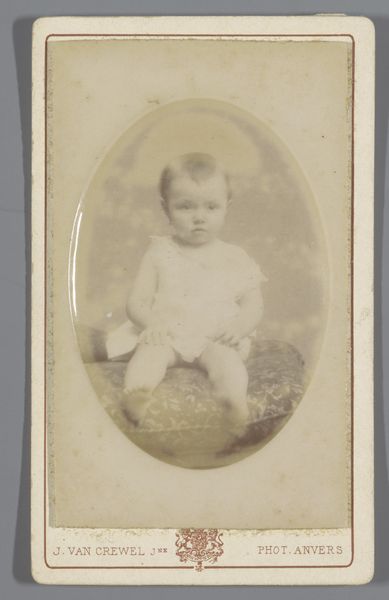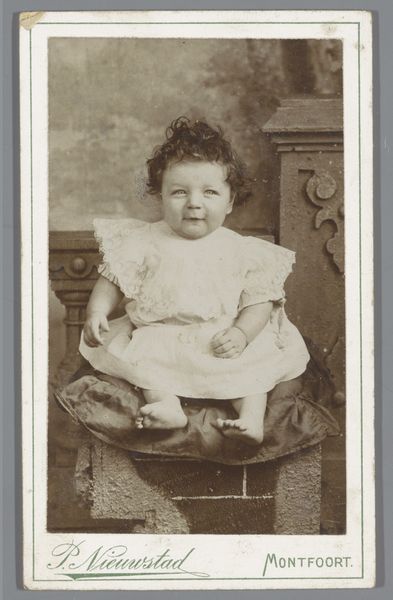
Portret van een onbekende baby, vermoedelijk een meisje c. 1892 - 1906
0:00
0:00
photography, gelatin-silver-print
#
portrait
#
photography
#
gelatin-silver-print
#
genre-painting
#
realism
Dimensions: height 104 mm, width 64 mm
Copyright: Rijks Museum: Open Domain
Editor: Here we have a gelatin silver print by Machiel Hendricus Laddé, titled "Portrait of an Unknown Baby, presumably a girl", dating from around 1892 to 1906. There's something incredibly tender, almost vulnerable about this little one. What strikes you most when you look at it? Curator: I'm immediately drawn to consider the societal expectations placed upon girls at the time. This image, a product of its era, likely reinforced prevailing gender roles. Look at the frilly white dress, the delicate pose. How does this formal presentation, even in infancy, contribute to constructing a very specific ideal of femininity? Editor: That's fascinating! I hadn't thought about the constructed nature of the image so explicitly. Do you think the 'unknown' aspect of the subject amplifies these ideas? Curator: Absolutely. The anonymity allows us to project broader social narratives onto the baby. She becomes an emblem, less an individual and more a symbol of idealized girlhood, innocence, and perhaps, even a blank slate onto which future societal expectations will be inscribed. How might contemporary viewers react to these representations? Editor: It feels so removed from how we document childhood now, much less posed, less formal. Perhaps a bit… suffocating? Curator: Precisely. Considering the lack of agency, how are such portrayals of children and women, specifically, affected by the historical dynamics between observer and observed? Can photography further enable and justify patriarchal viewpoints? Editor: This conversation makes me see how much a simple portrait holds within its frame. It's much more than just a cute baby photo! Curator: Indeed! It is a valuable artifact that facilitates critical inquiry into representation, gender, and the evolving role of photography in shaping our understanding of identity. Editor: Thanks so much! It's incredible how you connected the image to broader themes of gender and social expectation. Curator: My pleasure! Let's always push for that intersectional lens, ensuring that we critique art's complicity, as well as its capacity for liberation.
Comments
No comments
Be the first to comment and join the conversation on the ultimate creative platform.
